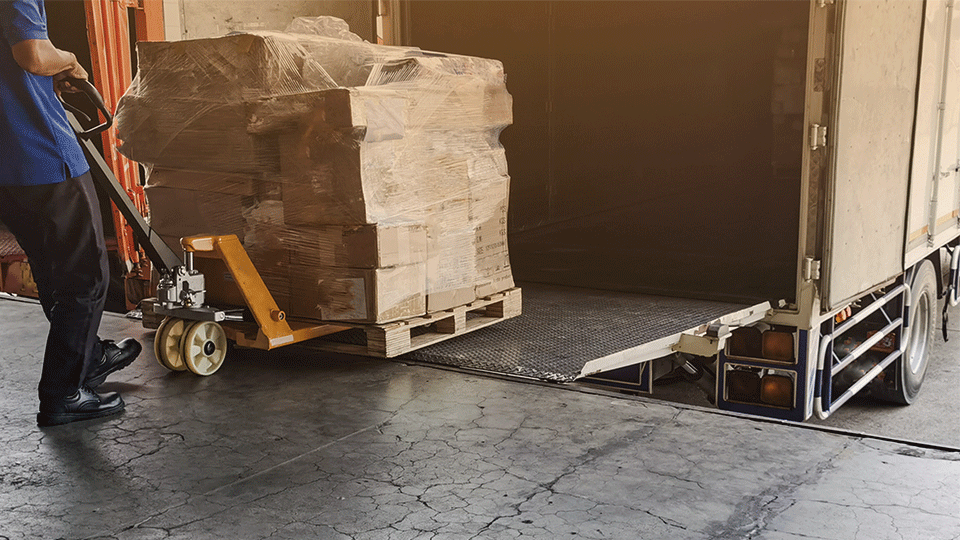
As companies worldwide look to expand their product and service offerings, the transportation industry is only growing to help them do so, and do so efficiently.
Operating efficiently, however, means different things from one company to another.
And, for some businesses, smoothly facilitating their supply chain requires the utilization of external resources.
In instances where a shipping facility has high inbound and outbound truck volumes, hiring a third-party lumper service that specializes in just loading and unloading, makes the most sense. Adding these workers not only decreases the time needed to unload trucks but also allows in-house workers to focus on other aspects of their day-to-day duties.
Whether it makes sense for you to solicit lumper assistance, however, is yet to be seen. To make the right decision for your company — a company that’s as unique as they come — you will need all of the information.
Here at Anderson Trucking Service (ATS), we’ve been working closely with shippers since 1955. During this time, we’ve seen the profound impact good lumper companies can make on our customer’s business.
But, history has also shown us that using lumpers at cargo touchpoints can also come with a set of disadvantages — disadvantages you’ll want to understand.
In this article, we’ll outline and explain lumper services by answering these questions:
- What are lumper services?
- What do lumper services cost?
- Which industries use lumper services most?
- What are the common problems shippers face when using these services?
What Is a Lumper Service?
Lumper services are third-party loading and unloading services typically arranged by the shipper or receiver of a shipment. With the goal of providing convenience to all parties by expediting loading/unloading procedures, reliable lumper companies can make a major impact on truck drivers, shippers and consignees alike.
Although they’re capable of fitting all types of supply chains, lumper services are typically most effective when contracted by high-volume shippers that would otherwise need to hire additional workers to load/unload inbound dry van freight.
A benefit to truck drivers — by removing them from loading/offloading procedures — lumper services have become an increasingly common and valuable addition to the transportation world.

What Do Lumper Services Cost?
Lumper services can range widely in price from one situation to the next. For this reason, expect to pay between $25 and $500+ in lumper fees depending on the specifics of your requirements.
Common factors influencing these charges include but aren’t limited to:
- The location of your pick-up/drop.
Are there multiple lumper companies in your area for you to choose from? If so, expect to pay a relaxed rate. In more remote locations, securing lumper services may be more difficult — increasing the price to match.
- The total amount of freight handled by lumper workers.
As the amount of freight you need to move increases, so too will your lumper fees as more time is dedicated to meet your requirements. Additional fees for pallet restacking may also be billed to you when necessary.
As your requirements get more complex and timelines more strict, expect your lumper fees to rise. And, though they can help you avoid other accessorials like detention and driver-assist if you plan to use lumpers on your next load be sure to budget plenty of dollars toward this expense.
What Is The Difference Between Lumper Fees and Driver-Assist Charges?
The main difference between lumper fees and driver-assist charges — which are both billed to the party paying for a shipment — is that lumper fees are paid to the third-party service provider assisting with loading/unloading a trailer, whereas driver-assist charges are levied when the truck driver on a shipment is required to help physically load/unload a trailer.
Where cost is concerned, lumper fees typically range between $25-$500 dollars and driver-assist charges usually cost $100-$125.
Which Industries Use Lumper Services Most?
Great lumper companies are capable of making an impact on loading/unloading processes across industries. That said, the tight timelines and strict deadlines faced by food and beverage companies make lumper services extremely valuable.
Due to the perishable nature of many of these products — particularly those moved via reefer trailers — it’s crucial for these shipments to be loaded/unloaded with appropriate haste. And, sometimes having extra help on hand at a pick-up or drop location is enough to mitigate the risk of spoiled food and beverage products.
In the early days, lumper companies saw a large portion of their workload occupied by food and beverage warehouses, distribution outposts and cold-storage centers.

As time has worn on, lumpers have also become a mainstay resource for companies in other industries that also have a high volume of freight to move each day.
Today, in addition to food and beverage facilities, lumpers are also found loading and unloading trucks at the distribution centers and warehouses of large retailers, wholesalers and manufacturers.
Common Issues With Lumper Services
No service industry is void of issues. Like other aspects of your supply chain, be it your vendors, transportation providers or receivers, you’ll need to diligently manage your relationships with each lumper company.
Two of the most common issues companies run into when using lumper services, are:
- Under-performance
- Miscommunication between parties
#1: Under-Performance
Sometimes, especially when high volumes of freight require their services, lumpers may fall behind.
And, in an industry where an extra hour can negatively impact a truck drivers’ clock — damaging their ability to make the most of their limited service hours and future interest in moving your freight — prolonged loading/offloading procedures are the last thing you need.
For this reason, make sure to state your expectations for lumpers well in advance of hiring them. Should they fail to meet these guidelines, work with them to find a solution, or look for another lumper company.
Over time, a good lumper service provider will adjust to your processes and cadence. That said, this may a bit of time and optimization initially.
#2 Miscommunication Between Parties
Adding another service provider to your transportation processes can be challenging. Keeping everyone — your provider, truck driver, receiver and lumpers — on the same page will take some steady oversight on your behalf.
Communicating proper timeline information, relaying in-transit updates and ensuring that no one is surprised by the presence of lumper workers at loading/offloading sights — particularly your driver (who may be hesitant) — will be crucial.
Failing to do so could come at the expense of the relationships you hold with carriers.
You see, even though — as the shipper — you will be responsible for paying lumper fees, drivers are often required to front this expense. And, in order to obtain the necessary paperwork and get to their next load, drivers don’t have a choice where this is concerned.
As you might imagine, paying lumper fees that they weren’t planning for can be an inconvenience for truckers. For this reason, it’s important that you inform each of your carriers well before they reach your destination facility to avoid potential issues.
Round Out Your Knowledge On Transportation Delivery Services
Now that you understand what lumper services are and how they help companies move their goods, you’re better equipped to make the right choice for your supply chain.
That said, using lumpers to help you off-load freight, isn’t your only route forward.
White-glove delivery services are another common transportation option utilized by shippers with cargo to distribute. With their assistance, companies around North America and the world ensure their products are delivered safely and efficiently — even without offloading equipment or resources on hand.
To help you decide whether lumper or white glove delivery services (which aren’t mutually exclusive) will fit your requirements best, check out our article on this topic for more information.
